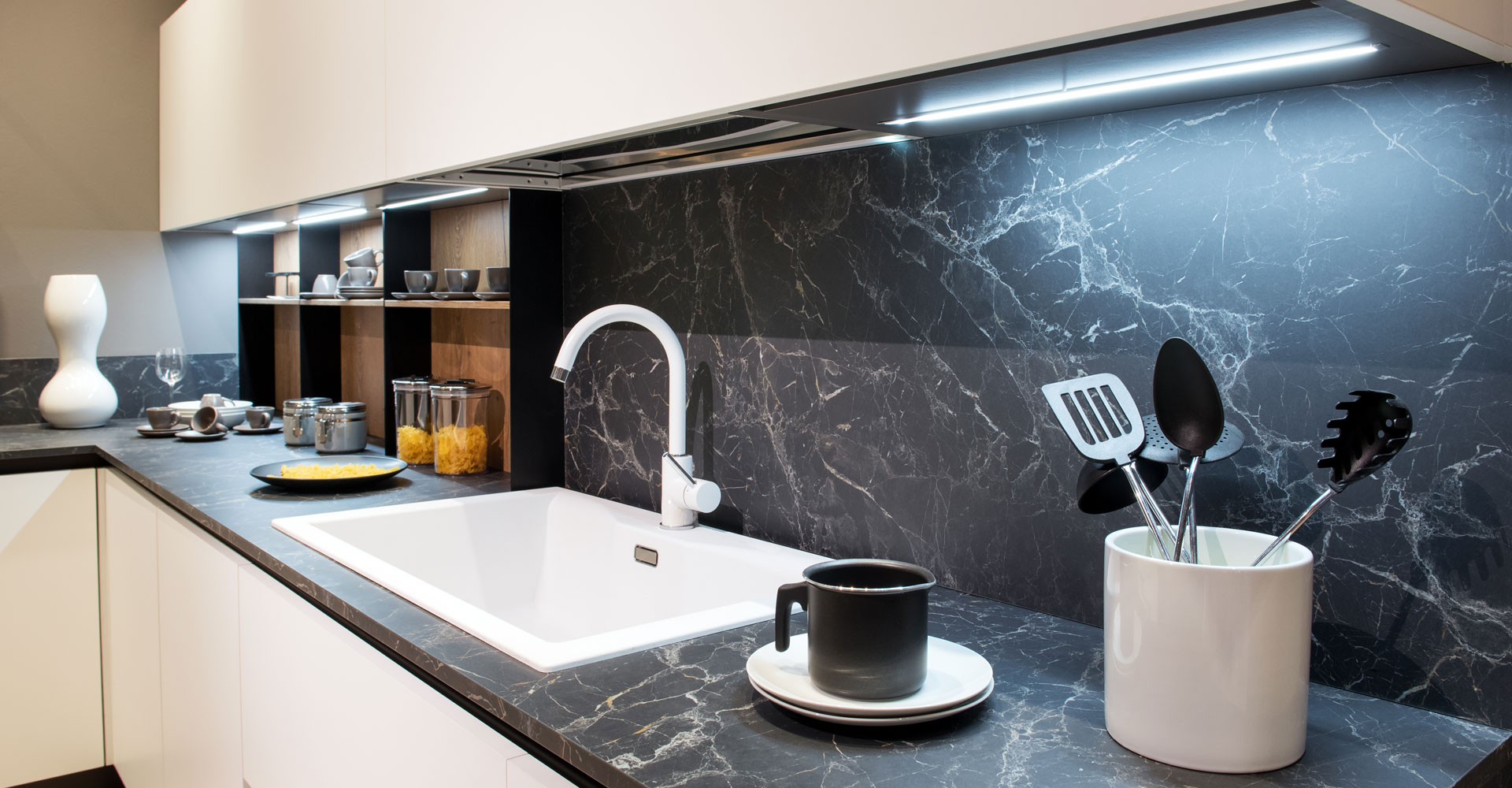The kitchen, often regarded as the heart of a home, serves as a multifunctional space where culinary masterpieces are created, and family gatherings take place. In kitchen aesthetics and functionality, one element that has gained prominence is the kitchen splashback. This often-overlooked feature plays a crucial role in protecting your walls from stains, enhancing the overall design, and contributing to the cleanliness of the space. In this blog post, we will delve into the world of glass splashbacks, exploring their benefits, materials, and whether they are a suitable addition to your home.
Benefits of Kitchen Splashbacks:
- Stain Protection: One of the primary functions of a kitchen splashback is to protect the walls from stains and splatters that occur during cooking. Whether a sauce splatter or a water splash, a splashback is a barrier, preventing these substances from reaching and staining your walls.
- Easy Maintenance: Cleaning and maintaining a kitchen can be daunting, but a well-installed splashback can significantly reduce the effort required. With materials such as glass, tiles, or stainless steel, cleaning becomes a breeze, as these surfaces are resistant to stains and easy to wipe down.
- Aesthetic Enhancement: Beyond functionality, kitchen splashbacks contribute to the overall aesthetics of the space. They provide an opportunity to introduce colour, texture, and patterns into the kitchen design, creating a visually appealing backdrop that complements the rest of the decor.
- Increased Property Value: Homebuyers and real estate experts often appreciate a well-designed and functional kitchen. Installing a stylish and practical splashback can enhance your kitchen’s overall appeal, potentially increasing your home’s resale value.
Materials for Kitchen Splashbacks:
- Tiles: Traditional and versatile tiles are famous for kitchen splashbacks. They come in various shapes, sizes, and materials, allowing homeowners to customise their kitchen design. Ceramic, porcelain, and glass tiles are standard options, each offering unique benefits in terms of durability and aesthetics.
- Glass: A modern and sleek option, glass splashbacks are favoured for their seamless appearance and ease of cleaning. They are available in a wide range of colours and can be customised to fit the dimensions of your kitchen, providing a seamless and visually striking surface.
- Stainless Steel: Known for its durability and resistance to corrosion, stainless steel is a practical choice for kitchen splashbacks. It is trendy in contemporary and industrial-style kitchens, adding a touch of sophistication while ensuring easy maintenance.
- Acrylic: Lighter and more affordable than glass, acrylic splashbacks are a budget-friendly alternative that still offers a variety of colour and design options. While not as heat-resistant as glass, acrylic is durable and easy to clean, making it a suitable choice for many kitchens.
Is a Kitchen Splashback Suitable for Your Home?
Whether a kitchen splashback suits your home depends on various factors, including lifestyle, design preferences, and budget constraints.
- Lifestyle Considerations: A splashback can be a practical addition to your kitchen if you are an avid cook who frequently experiments with recipes. It protects your walls from inevitable spills and splatters, making cleaning more straightforward. Families with young children who may be prone to accidental messes can also benefit from the stain-resistant properties of a splashback.
- Design Preferences: If you view your kitchen as more than just a functional space and value its aesthetic appeal, a splashback becomes a canvas for expressing your style. Whether you choose a bold colour to make a statement or a subtle pattern to complement existing decor, a splashback can be crucial in creating a cohesive and visually pleasing kitchen design.
- Budget Considerations: The cost of installing a kitchen splashback can vary depending on the material chosen, the size of the area to be covered, and installation expenses. While high-end materials like glass may be more expensive, budget-friendly options like tiles or acrylic can provide a cost-effective solution without compromising style.
- Maintenance Preferences: Consider your willingness and ability to maintain your kitchen space. If you prioritise easy cleaning and low maintenance, materials like glass or stainless steel may be preferable. On the other hand, if you enjoy the tactile nature of traditional materials like tiles and are willing to put in a bit more effort for upkeep, they can be an excellent choice.

